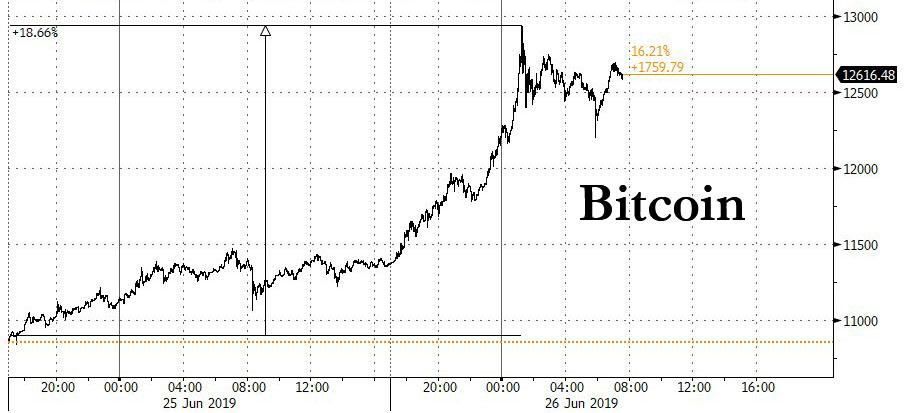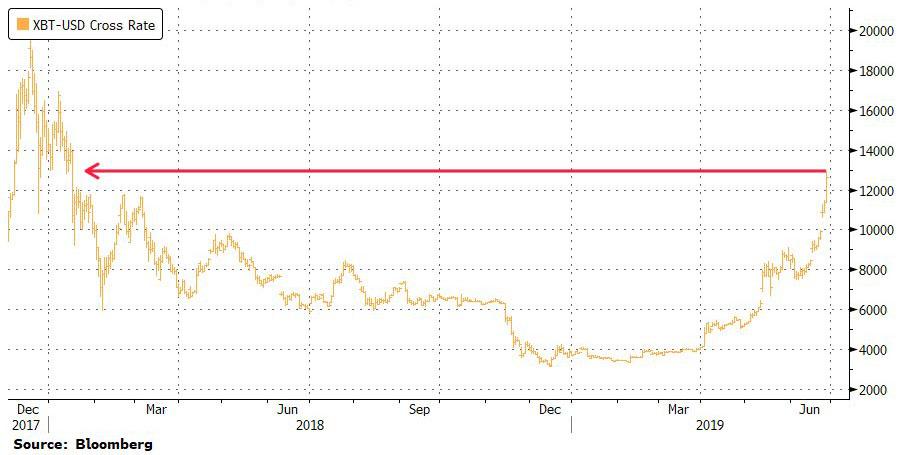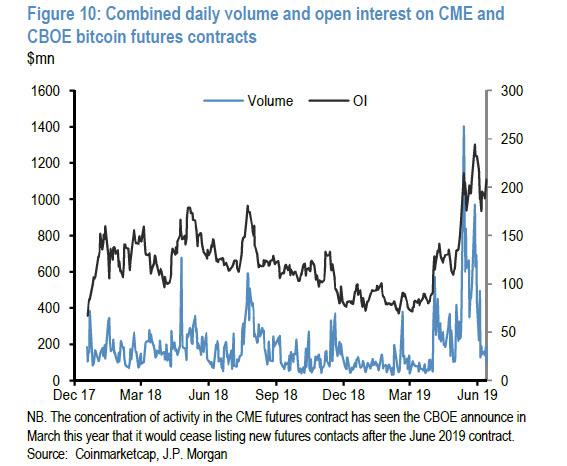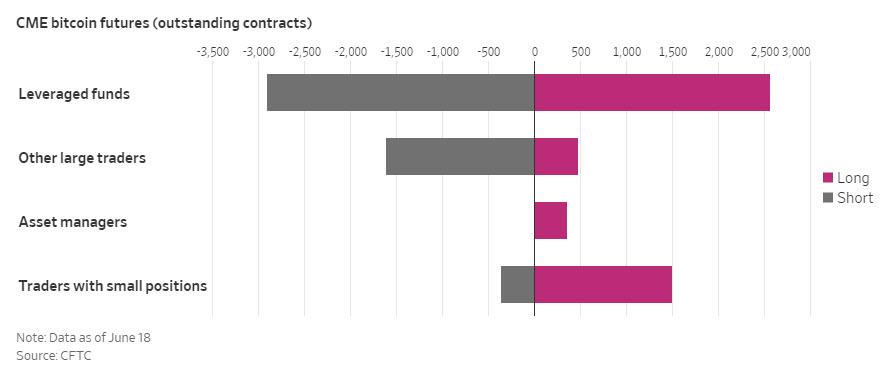The last time Bitcoin rose above $12,000 was in December 2017, when it continued to rally, on some days moving several thousand dollars inhours, eventually reaching its all time high as $19,511 just before Christmas 2017. That surge, however, was followed by a calamitous drop as retail investors fled, with the crypto dropping below $6,000 by February, and hitting $3000 just months later. All in all, in December 2017 and January 2018, Bitcoin spent about six weeks above $12,000.
What If There Was No Money?
Will this time be different, is the main question asked by traders. And as usual, the second biggest question posed by traders, investors, speculators and plain old haters is what is the reason behind the move.
According to some, Facebook’s announcement this month has revived interest in coins, while investors seeking safety have also pushed up Bitcoin’s price.
“It obviously does appear to be benefiting from some sort of flows that gold is benefiting, too,” CMC Markets chief strategist Michael Hewson said. “You’ve got all this stuff about Libra going on, which is renewing interest in bitcoin. Crypto is back in vogue.”
That part was right; what he said next, however, was not - he added that the investors buying bitcoin were speculative. That is precisely the opposite of what JPM found last weekend when the bank concluded that the current bout of buying is not retail - as was the case for much of 2017 - but institutional.
Meanwhile, as bulls cheer signs that the next bubble in cryptos is well and truly here, sparked by interest in virtual currencies from major companies like Facebook and JPMorgan, skeptics say it’s unclear how those initiatives will ultimately benefit Bitcoin and its peers.
It is also unclear if Facebook's Libra "crypto" experiment has anything to do with the recent move. To be sure, it's not news as it was well known months in advance that Facebook was launching its "crypto" product, which as explained here before, is not even crypto. Instead what appears to be causing the rush into bitcoin, ethereum and other cryptos is global monetary policy (and Chinese capital flight).
Meanwhile, not everyone agrees with JPM that institutions are now long bitcoin: according to the WSJ citing the latest CFTC Commitment of Traders report, hedge funds and other money managers held about 14% more bearish “short” positions in CME bitcoin futures last week than they did bullish “long” positions,
Other large traders were even more bearish. “Other reportables”—a loose category of firms that don’t necessarily manage money for outside investors—held more than three times as many short positions in bitcoin futures as long ones, the CFTC report shows.
The WSJ concludes that it is mostly small, retail investors who are taking the other side of the trade, in clear disagreement with JPM's conclusion. Among traders with fewer than 25 bitcoin contracts, a category that likely captures many individuals placing bets in bitcoin, long wagers outnumbered short bets by 4 to 1.
“Traditional market participants may be more skeptical of [bitcoin] than millennial day traders,” said George Michalopoulos, a portfolio manager with Chicago fund manager Typhon Capital Management LLC, although he stressed that his views were speculative and that it is hard to know what is driving the CFTC’s numbers.
Of course, if the WSJ is right, it would suggest that a big reason for the bitcoin surge higher is an institutional short squeeze as retail investors are once again proven right.
Finally, for an extended attempt to explain the recent surge in bitcoin, here is a tweet storm from CoinShares Chairman Danny Masters who lays out his, in our opinion, far more accurate take of what is behind the latest bubble in bitcoin.
- Source, Zero Hedge



